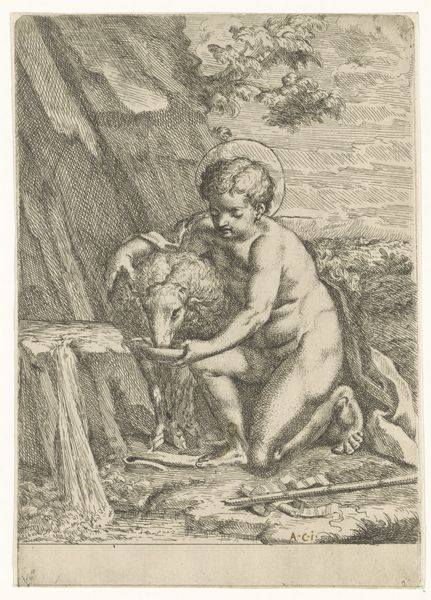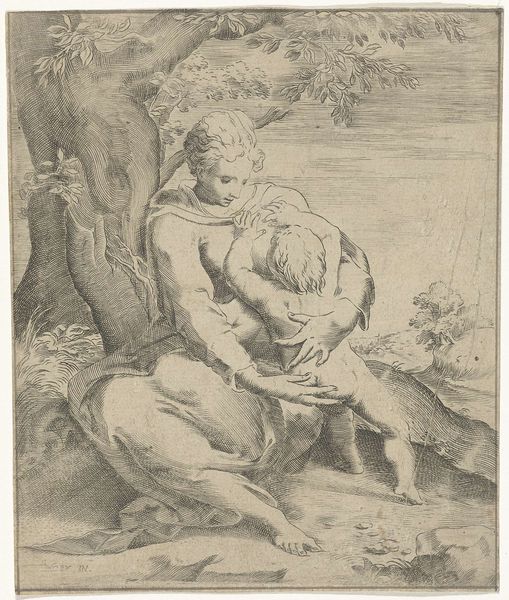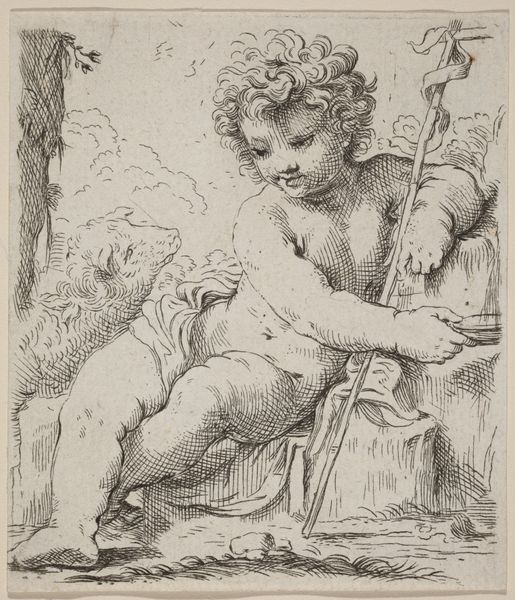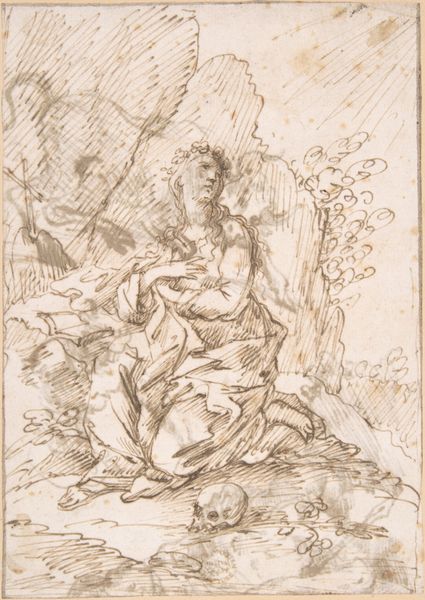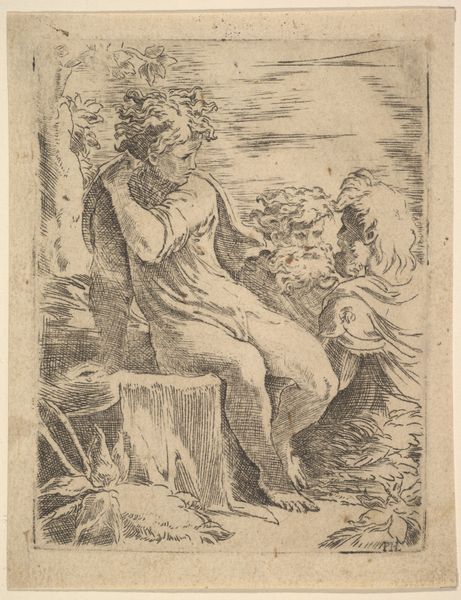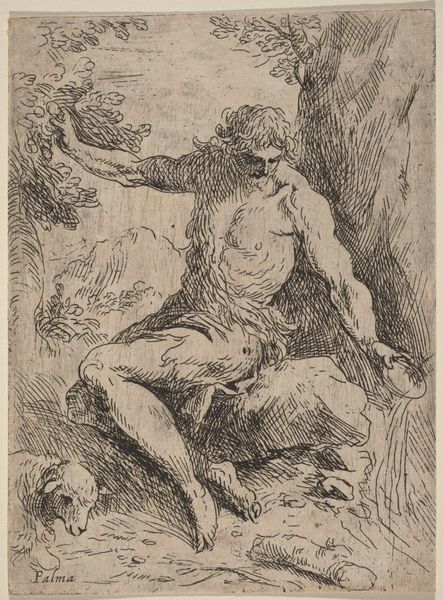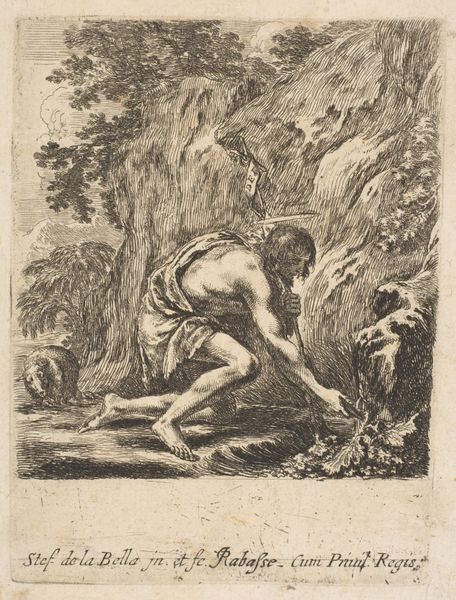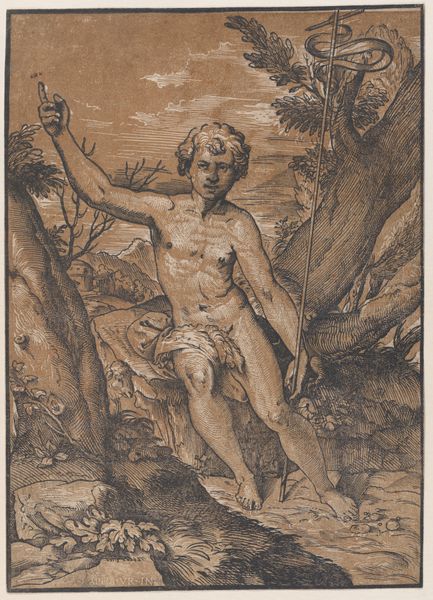
drawing, print, etching
#
tree
#
drawing
#
ink drawing
#
baroque
# print
#
etching
#
landscape
#
figuration
Dimensions: Sheet: 6 11/16 × 6 5/8 in. (17 × 16.8 cm)
Copyright: Public Domain
Editor: So, this is "Saint John the Baptist in the desert," an etching by Simone Cantarini from between 1632 and 1642. The first thing that struck me was the intimacy of it, even though it's a religious subject. He seems very self-contained. How do you see this piece operating within its historical context? Curator: That intimacy is key. Consider the Baroque period’s use of religious imagery. It's meant to inspire an emotional connection in the viewer, often leaning on heightened drama. However, Cantarini presents us with a contemplative John. Do you see any hints of socio-political context here in the depiction of a biblical figure? Editor: Well, he's alone, in nature. Maybe a retreat from societal pressures? Or perhaps a criticism of courtly life, which was powerful during the Baroque? Curator: Precisely. The choice to depict John in solitude, engaging with the natural world, could be interpreted as a commentary on the artist’s relationship with the church, the political establishment, and wealthy patrons. Notice how the detailed etching emphasizes both John's humanity and his connection to the earth. How does this contrast with traditional, more glorified depictions? Editor: It’s much less… grand. More personal. I mean, he's not preaching or performing miracles, he's just…existing. Curator: Exactly! This challenges the status quo. It implies that spirituality can be found outside of formal institutions and elaborate displays of power, instead found in direct connection to the natural world, perhaps a commentary on social inequity. He encourages the common man to access their spirituality within themselves, in nature, rather than through religious institutions. Editor: That’s a perspective I hadn't fully considered before. It adds a new layer to my understanding of Baroque art and its purpose beyond religious propaganda. Curator: And it helps us understand the complicated push and pull many artists navigated while creating in a world of entrenched institutions.
Comments
No comments
Be the first to comment and join the conversation on the ultimate creative platform.


